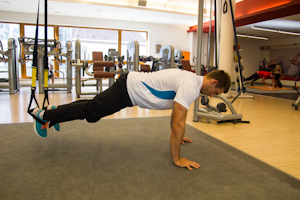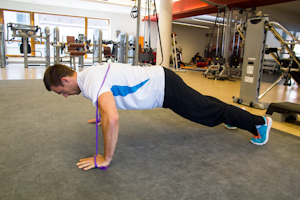Last part we talked about breathing, body core and stretching. I hope that you are already a little clear on these topics and that you are working hard on yourself.
As for stretching, I am preparing a descriptive and photographic article, with precise positions and stretching exercises, with which you can perform stretching.
Basic exercises
In today’s part we will focus on different variants of basic exercises. Those of you who monitor our website regularly will probably wonder which basic exercises I think. Usually under this term we discuss bench-press, deadlift and squats. In the concept that I have in mind, in this list we only come across one and the same exercise, namely squats.
I consider the exercises that we will analyze to be an absolute basis that needs to be controlled perfectly with the weight of your own body so that you can move on, add weights, intensify your training and start to do other exercises.
Perfect control means mastering the exact scope of the exercise and maintaining proper posture throughout the performance. It is also a prerequisite to involve the muscles we want to involve, and not to help the muscles already overloaded with normal activities and movement stereotypes from our lives.
These exercises are CLICK, Squat and SHYB (pull-ups on the crossbar).
If you master these three exercises, you basically don’t need another one – for regular exercise. Of course, we want to change the training only for mental stereotypical reasons, and in order to achieve maximum adaptation and thus the development of condition and muscles, we must change the exercises, perform more demanding, more intense movement patterns and training in general.
What will be the following variants and instructions?
It is basically a methodological series, in which there are always more variants.
You can use these variants to practice the classic form of exercise, which you do not yet know technically. I also attach options to make the classic variant more difficult, if the basic design is no longer a problem, but you still do not want to reach for an external load or you want to train with your own weight, more demanding on balance, more functional.
Click
Subjectively for me, definitely one of the “kings of exercises”. This is a very complete exercise, the implementation of which, at least from a theoretical point of view, is known to the majority of the population. Of course, they are already lagging behind in the design itself, or the idea of the correct posture, which should be set throughout this exercise.
The complexity is really clear. Although few muscles work concentrically and eccentrically – mainly the muscles of the arms – the triceps brachii and biceps brachii , the muscles of the shoulders and chest – the deltoid muscle and the pectoralis muscle . However, the function of other muscles, which maintain the correct setting of the body in space, is important. Muscles that work isometrically are listed in the main groups – shoulder and shoulder stabilizers, core muscles.
Simplify the handle
Cranks for raised support
With this variant, you can perform the exercise as such, just by increasing the angle of the body with the ground, you will significantly reduce the load on the practiced parts. The ideal helper in this case is multipress, where you can gradually reduce the support (axis) gradually add to the difficulty of the exercise. It is really a suitable option for breaking down bad stereotypes, such as a protruding chin with a head, etc.
If the handle is really cursed for you, you are not sure that your back is correctly curved, your head in the extension of the torso, start calmly by clicking on the wall, it is no shame, you know why you do it, and you will soon work your way to a more demanding variant.
Another option is to use, for example, the TRX suspension system, where you can again simply adjust the intensity of the exercise by gradually “reversing”.
Common aids that can be used in any gym are certainly steppes – they can also be variably adjusted in height and the handle can be changed gradually.
The last option for exercising on raised support is to introduce a large ball, which is definitely not an easier option, you can include this option only after mastering the usual handles. It is much more difficult to maintain the stability of the shoulders and the entire upper half of the body. There is a lot of emphasis on the involvement of the body’s core.
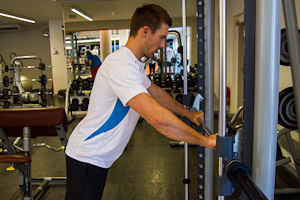
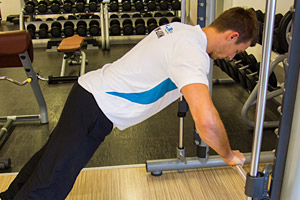
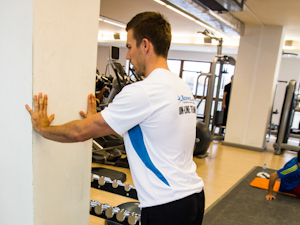
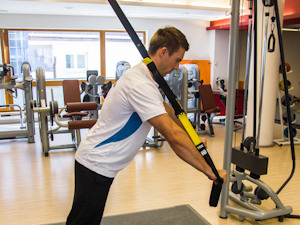
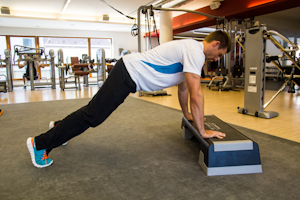
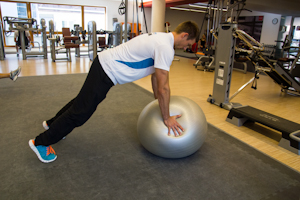
Approximation of support points
Another option, as the title suggests, is not to lean on the toes, but to bring the support closer to the arms. The basic variant, generally known, is support on the knees – the so-called women’s handles.
I hate to hear this name being called that. In fact – most of my clients click with their knees. And men.
A good tool for bringing the support closer and thus reducing the load is a large ball – the place underlaid by the ball will become your axis of rotation – the closer it is to the head, the easier it will be to click. But don’t forget to hold your body and don’t break over the ball, but keep your body upright. This will add a few more stabilizing muscles.
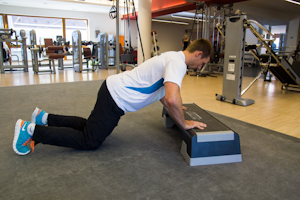
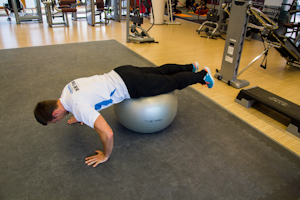
How to make the click harder
Of course, you can also proceed in reverse and thus reverse the entire tilt of the body and support the legs. We will make this variant a little more unstable by using the TRX suspension system.
One way to use an external load or tension is to use a weight vest, for example – pay attention to the weight distribution, it is not advisable for the weight to rest on the lumbar region, as is usually the case. A suitable variant, which you can see below in the photo, is to use an expander. In any case, there are no limits to imagination.
